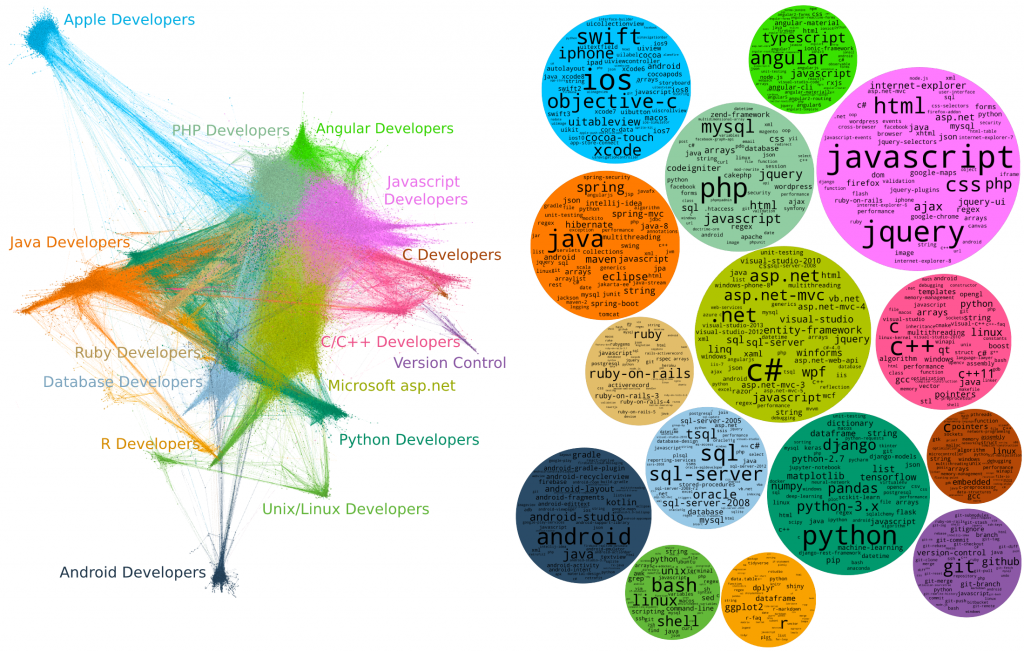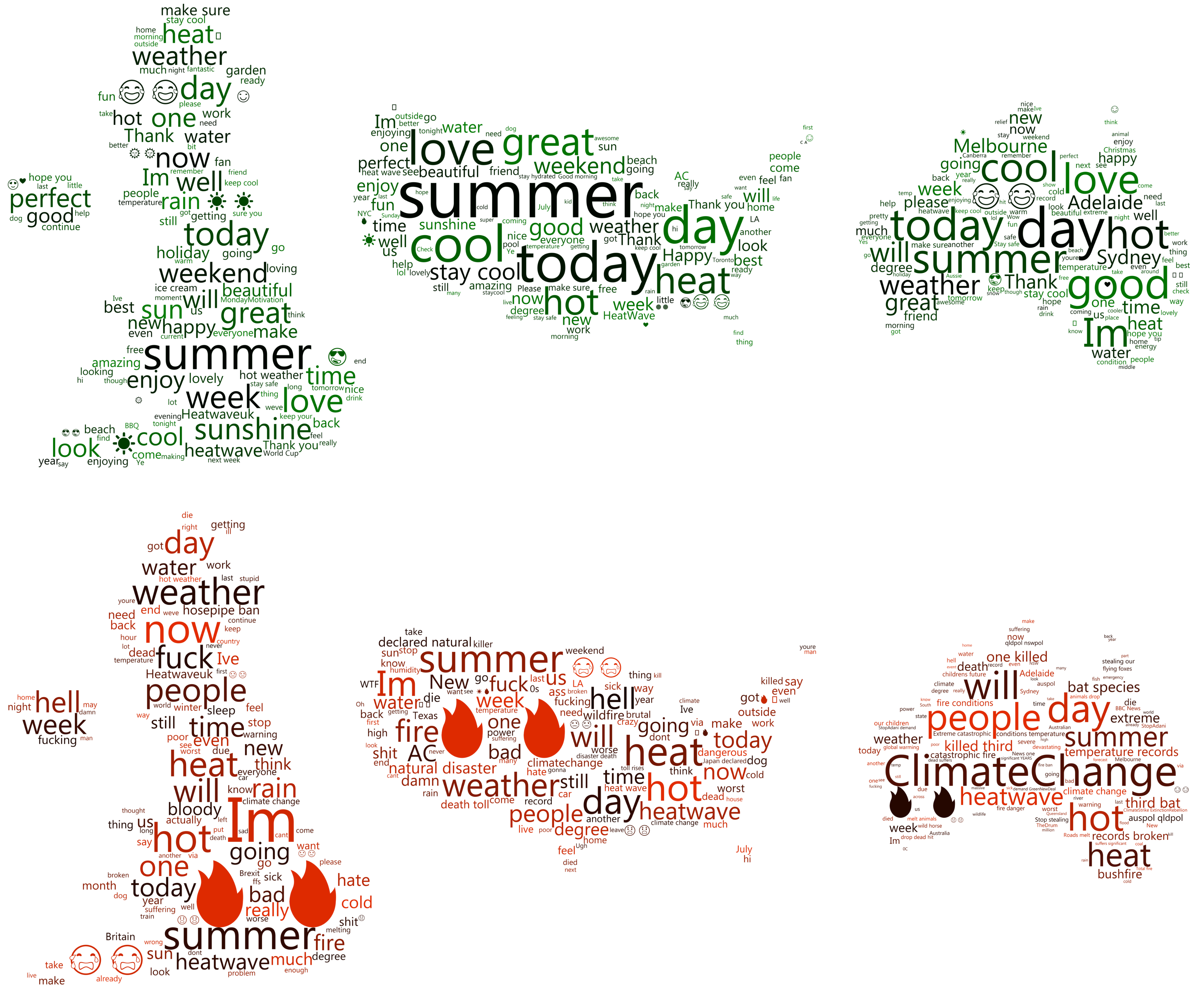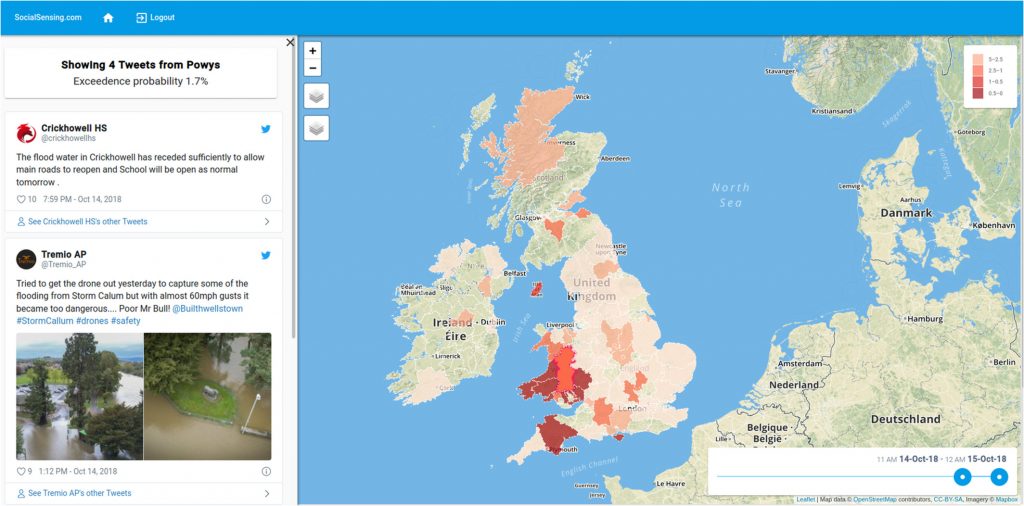Iraklis and Hywel have recently published a new paper investigating the growth of the Q&A communities on Stack Overflow, which is now available online.
Question and answer (Q&A) websites are a medium where people can communicate and help each other. Stack Overflow is one of the most popular Q&A websites about programming, where millions of developers seek help or provide valuable assistance. Activity on the Stack Overflow website is moderated by the user community, utilizing a voting system to promote high quality content. The website was created on 2008 and has accumulated a large amount of crowd wisdom about the software development industry. Here we analyse this data to examine trends in the grouping of technologies and their users into different sub-communities. In our work we analysed all questions, answers, votes and tags from 21 Stack Overflow between 2008 and 2020. We generated a series of user-technology interaction graphs and applied community detection algorithms to identify the biggest user communities for each year, to examine which technologies those communities incorporate, how they are interconnected and how they evolve through time. The biggest and most persistent communities were related to web development. In general, there is little movement between communities; users tend to either stay within the same community or not acquire any score at all. Community evolution reveals the popularity of different programming languages and frameworks on Stack Overflow over time. These findings give insight into the user community on Stack Overflow and reveal long-term trends on the software development industry.




